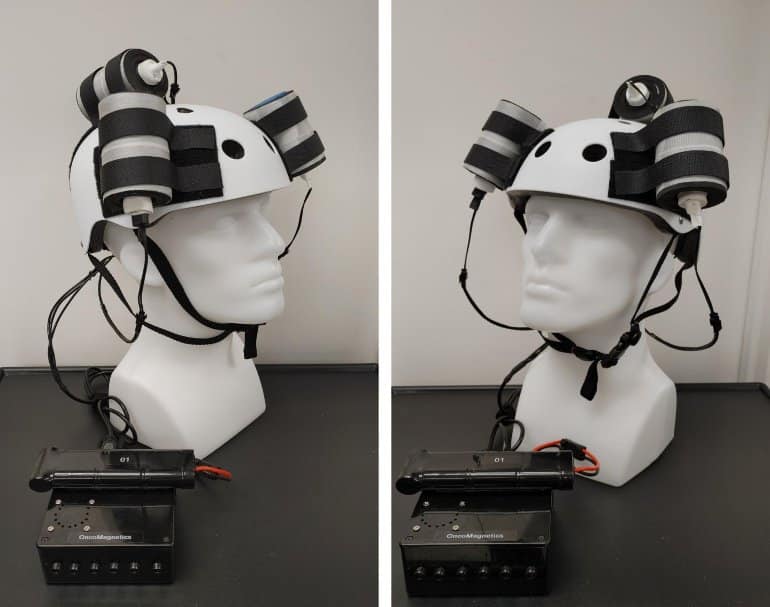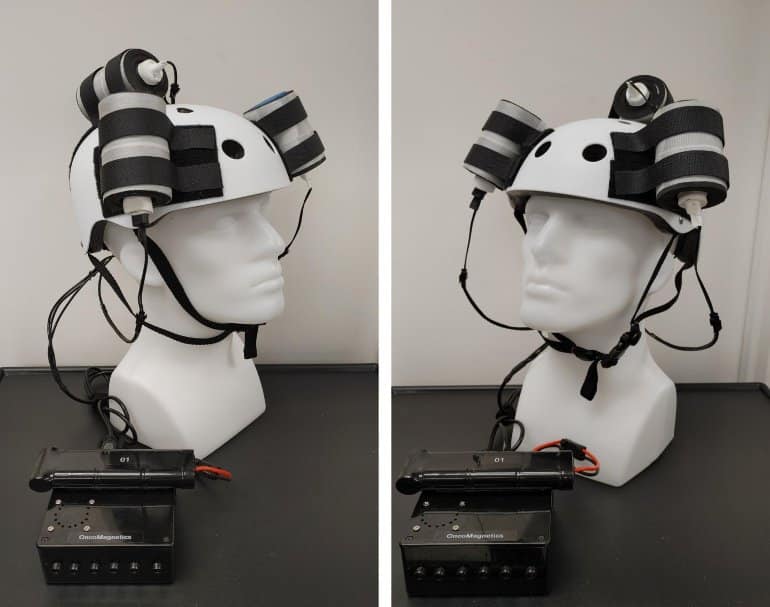Researchers from the neurosurgery department ofHouston Methodist Neurological Institute they reduced a glioblastoma by more than a third. They achieved this by using a helmet that generates a non-invasive oscillating magnetic field, worn by a patient during home therapy. Unfortunately the patient, 53 years old, died from an unrelated injury about a month after starting treatment, but already during that first, short period 31% of the tumor mass disappeared. The autopsy confirmed the rapid response to treatment, and now opens up new scenarios in the treatment of this lethal brain tumor.
Thanks to the courage of this patient and his family, we were able to test and verify the potential effectiveness of the world's first non-invasive therapy against glioblastoma. The generous permission of the autopsy by the family made an invaluable contribution to the further study of this therapy
David S. Baskin, director of the Houston Methodist Department of Neurosurgery and author of the study

A non-invasive hope against glioblastoma
In the case study published in Frontiers in Oncology, Baskin and his colleagues detailed the groundbreaking journey of their pioneering patient who suffered from end-stage recurrent glioblastoma, despite radical surgical excision, chemoradiotherapy, and experimental gene therapy.
Glioblastoma is the deadliest of brain tumors in adults, almost always fatal, with a life expectancy of a few months to two years.
When the patient's glioblastoma recurred in August 2019, Baskin and his team, already working on the treatment with mouse models, received FDA approval to compassionately treat the patient with their newly invented oncomagnetic device.
What is the treatment?
The treatment consisted of the intermittent application of an oscillating magnetic field generated by the rotation of permanent magnets in a specific frequency profile and time pattern. First administered for two hours under supervision, subsequent treatments were administered at home with the help of the patient's wife, with treatment times up to a maximum of just six hours per day.
The oncomagnetic device seems (deceptively) simple: three oncoscillators securely attached to a helmet and connected to an electronic controller. An invention of the co-author Dr Santosh Helekar. During the five weeks of treatment, magnetic therapy was well tolerated and the mass and volume of the glioblastoma were reduced by nearly a third, with a narrowing that appeared to be related to the treatment dose.
“Imagine treating glioblastoma without radiation or chemotherapy,” Baskin said. “Our results in the laboratory and with this patient open a new world of non-invasive and non-toxic therapy for the cancer to the brain, with many interesting possibilities for the future."


